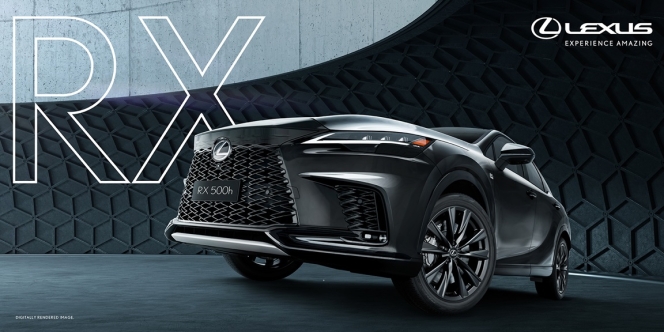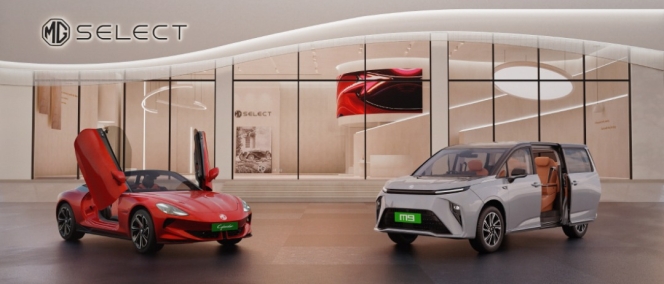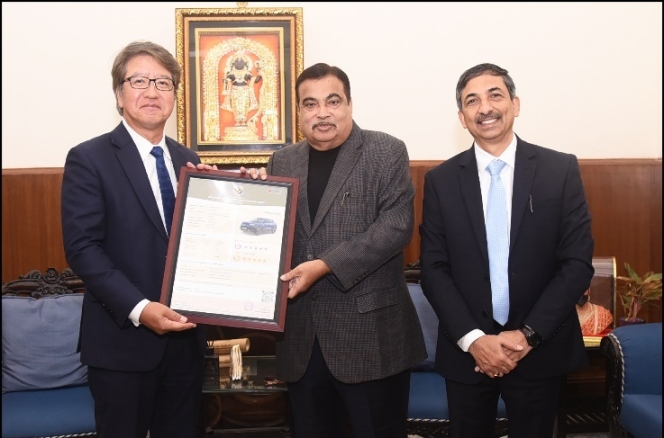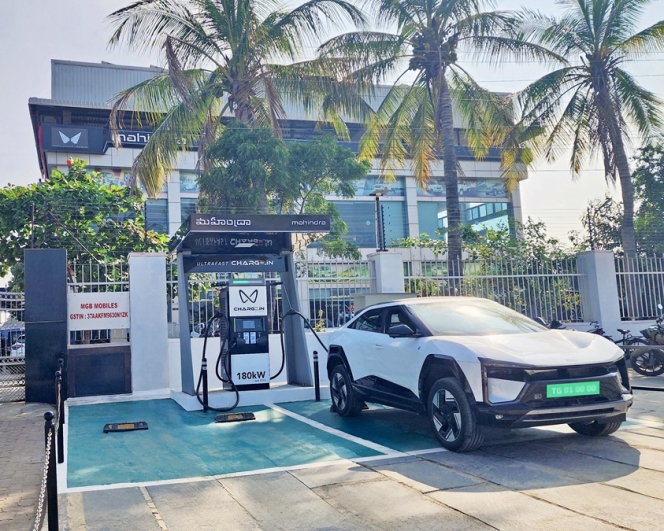
Growing to clock 54,850 units in February 2021 as against the sale of 27,273 units in the corresponding month last year, the compact SUV segment has come to include the participation of almost all the manufacturers in the country today. The Kushaq marks the latest entry, and clearly the most exciting in terms of what it has to offer. A part of the segment that arguably is the most trending as far as passenger vehicles are concerned, the Kushaq is indicative of the direction in which the segment of compact SUVs is heading in. It is was until recently led by Maruti Brezza, a compact SUV segment that shares its platform as well as the assembly line with the Toyota Urban Cruiser. Said to have grown at the expense of mid-size sedans (including compact sedans) and premium hatchbacks, the compact SUV segment consists of no less than 11 offerings today. They are proof of the fact that they are not missed by any manufacturer. Overtaking the Maruti Brezza as the most selling compact SUV in April 2021, the Hyundai Venue has demonstrated how manufacturers like Hyundai, which began by selling high-end SUVs like Terracan and Santa Fe in India, are warming up to the trend of compact SUVs that is unique to India. Clearly so, when one understands that the Renault Duster was born out of the highly popular Renault Clio as a cost-effective crossover in Europe. It soon challenged more premium offerings there like the Skoda Yeti. Highlighting Indian automobile buyers’ psyche of cost consciousness, the compact SUVs like Kushaq are highlighting new growth prospects, technologies and features.

Tech and price trends
Considering the starting price of Brezza and Venue at INR 7.39 lakh and INR 6.92 lakh approximately, the Kushaq, at a starting price of Rs.10.5 lakh is certain to appear costly. Zac Hollis, Skoda’s director of Sales, Service & Marketing, has informed through a tweet that even the basic ‘Active’ variant carries a significant additional equipment over its competitors (see the comparison chart). The Kushaq is being offered with a TSI technology engine right at the basic level, he has added. Being offered with a cylinder deactivation technology that shuts two out of the four cylinders by sensing the load (via the accelerator pedal input) to ensure superior fuel efficiency and lower carbon footprint, the Kushaq reflects a technology trend that is taking shape among compact SUVs as new products join the fray. So, if the Renault Duster and one or two other vehicles in the compact SUV segment offer a turbo-petrol engine like the Kushaq does, right at the basic level, a majority offer a MPI engine. The technology trend concerning compact SUVs ironically also highlights a stress on petrol engines. The BSVI emission norms and decreasing price gap between petrol and diesel are said to be the reasons. Presenting the superior drive-ability and fuel efficiency of diesel are the turbo-petrol (also termed as Gasoline Direct Injection) models and variants. In the Kushaq, Skoda has termed the technology coinage as TSI.
If the compact SUV offerings like the Kushaq, Brezza, Toyota Urban Cruiser, Duster and many others highlight a rising trend of petrol only variants in-line with the reasons mentioned above, an amount of technological exploration is on in the area of transmissions. As urban buyers warm up to compact SUVs and make a shift over from sedans and hatchbacks, almost every model being offered on the market is available with an option of an automatic gearbox. The highlight of this trend is the mushrooming of dual-clutch automated transmissions that support sporty and agile driving experience. As the first product to spring from Volkswagen Group’s India 2.0 project (see box), the Kushaq, is available with a choice of the much acclaimed DSG automated transmission. Apart from just one or two vehicles in its segment offering a CVT ‘auto’ transmission, and what could be termed as conventional ‘torque convertor’-based auto-box, many compact SUVs are offering their version of DSG automated transmission by calling them as DCT (Dual-Clutch Transmission). Most basic trims in the segment are offered with a 5- or 6-speed manual transmission.

Feature trends
Almost all the compact SUVs being offered in India are front-wheel drive with the engine and trans-axle located transversely at the front. The only four-wheel drive compact SUV, Duster, has already lost its arrangement to power both the axles. A look at the powertrain arrangement of the compact SUVs and their monocoque body construction, and it will be clear that they could be described as front-wheel hatchbacks with ‘lift-up’ suspension, an appropriate body style, and bigger dia. wheels and higher ground clearance. Most compact SUVs are equipped with McPherson strut suspension at the front and a twist beam axle at the rear. The Kushaq is no exception. It is keen to set itself apart from the Korean, Japanese and homegrown offerings like the Mahindra XUV300 with safety, quality, design and technology, according to Hollis. Offering TSI engines and DSG transmission, which were until now found on more premium offerings, the Kushaq, reflects its technological composition and the fact that it is the first vehicle to roll-out of the India-centric project set up with an investment of Euro-one billion, in its price positioning. The compact SUV with the lowest starting price – the Hyundai Venue at Rs.6.92 lakh approximately, offers a 1.2-litre MPI petrol engine at the basic level. It is mated to a 5-speed manual gearbox.

When it comes to features, none of the compact SUVs on offer, including the Kushaq, is immune to the fact there is a direct bearing of price. The basic variants get what could be termed as ‘essential’ features whereas the top-end variants get a variety of ‘bells and whistles. Put together all the them and they include voice command, LED headlamps and tail lamps, rear view monitor, airbags, ABS and EBD, electronic parking brake, air purifier, start/stop, telematics, sunroof, TPMS, ESC, rear parking sensors, VSM, hill-start assist, cruise control, keyless entry, rear parking camera, touchscreen infotainment system and others. A look at the features offered by the compact SUVs, and a clear trend is evident in terms of technology. This technology pertains to an ability to stay connected with an increasingly smarter use of telematics. Many compact SUVs offer satellite navigation, tracking and connectivity features that are unique to their manufacturers. Ford, for example, offers the SYNC connectivity technology on the EcoSport. What makes it interesting is that a lot of software work relating to the connectivity features and various other functions of these compact SUVs has happened in India. If the Brezza’s local content amounts to 98 percent, that of the Kushaq is 93 percent.

Summing up
Emerging as a hot-bed of style and technology (the Tata Nexon is also available as an electric compact SUV and the MG Hector as a hybrid compact SUV), the trend pertaining to compact SUVs is getting clearer and clearer with every new product introduction. It is underlying quality, safety, comfort, localisation (read as Atmanirbhar Bharat) and an ability to control costs.
Lexus India Launches New RX350h Exquisite Grade At INR 8.99 Million
- By MT Bureau
- December 03, 2025

Japanese luxury brand Lexus India has introduced a new ‘Exquisite’ grade to its RX 350h line-up, strengthening the model’s presence in the luxury SUV segment.
The new RX 350h Exquisite grade starts at INR 8.99 million (ex-showroom), which goes up to INR 10.09 million (ex-showroom).
The RX 350h Exquisite grade features Lexus’ hybrid system, which combines a highly efficient 2.5-litre inline 4-cylinder engine and high-output motor. It includes a bipolar nickel-metal hydride battery with enhanced performance. On the inside, it gets 10-way power adjusted front seats, heated and ventilated seating for front & rear seats and ambient lighting.
The RX 500h F-SPORT grade is the only Performance Hybrid Electric Turbocharged Luxury SUV in India. The 2.4 L-T HEV on the RX 500h features a front unit integrating a 2.4-L turbocharged engine, motor, a 6-speed automatic transmission and an eAxle with a built-in high output motor driving the rear wheels. The RX 500h features Dynamic Rear-Wheel Steering and DIRECT4 technology for acceleration.
The RX features a Mark Levinson 21-speaker audio system and offers Lexus Safety System+ with Dynamic Radar Cruise Control, Cross Traffic Alert and Safe Exit Assist with Blind Spot Monitor.
Between January and November this year, the RX model recorded 12 percent growth, reflecting rising demand for luxury SUVs in the country. During the same period, SUVs contributed about 40 percent to Lexus India’s overall performance, underscoring the RX’s pivotal role in driving the brand’s momentum.
Hikaru Ikeuchi, President, Lexus India, said, ‘The Lexus RX represents our dedication to luxury, design, performance, and sustainable mobility. As the luxury SUV segment continues to grow, the introduction of the new Exquisite grade allows us to offer guests a wider range of options and features to choose from. This enhancement reflects our continued commitment to expanding our portfolio and elevating the Lexus experience in India, supported by advanced technology and a guest-first philosophy.”
MG SELECT Crosses 1,000 Sales And 15 Experience Centres
- By MT Bureau
- December 03, 2025

JSW MG Motor India has announced that its luxury retail channel, MG SELECT, has crossed a triple milestone: reaching 1,000-unit sales, inaugurating its 15th Experience Centre and maintaining the second position in India’s luxury EV market.
The network now encompasses 15 Experience Centres across 14 cities in India, reinforcing the brand's commitment to delivering an exclusive automotive retail journey. The recent inauguration of the 15th store in Jaipur further underscores the brand's ambition to redefine luxury mobility.
The milestone also highlighted sustained market demand for the select portfolio and is a key driver behind the brand’s 32 percent YTD growth in 2025.
The company claimed that the MG Cyberster, India's highest-selling sports car, has a 4–5 month waiting period, and the MG M9 - Presidential Limousine shows strong momentum in the luxury MPV segment. The MG Cyberster is available at an ex-showroom price of INR 7.49 million, while the MG M9 is available at an ex-showroom price of INR 6.99 million.
Anurag Mehrotra, Managing Director, JSW MG Motor India, said, "Our rise to become the second largest luxury EV brand in the country speaks to a singular belief. True luxury is felt in every touchpoint when precision, ambition and care move together. Through MG SELECT we have crafted an ownership world where innovation meets desire and where every interaction feels intentional. We are shaping the next era of electric mobility for India’s most discerning customers, with a commitment that is both bold and deeply personal.”
The MG SELECT Experience Centres are spaces for the brand's flagship vehicles. These venues provide an immersive, gallery-like setting, ensuring the display of these models is the focal point of the customer interaction. The Jaipur showroom, located at Tonk Road near Sanganer Flyover, exemplifies the MG SELECT philosophy of ‘Reimagining Luxury’, featuring spacious, serene, and technologically advanced environments that elevate the car buying journey.
Maruti Suzuki e Vitara Gets 5-Star Bharat NCAP Safety Rating
- By MT Bureau
- December 02, 2025

Maruti Suzuki India has been awarded a 5-star Bharat NCAP safety rating for its e Vitara, marking a moment for the company's electric vehicle strategy.
The e Vitara is built on Suzuki’s Heartect-e platform designed for electric vehicles to deliver strength, structural rigidity and advanced high voltage protection. The ‘Made-in-India, Made-for-the-World’ e Vitara is designed and tested for temperature conditions across the world, ensuring performance from as high as 60deg Celsius to as low as -30deg Celsius. The model is offered with 49 kWh and 61 kWh battery options.
Nitin Gadkari, Minister of Road Transport and Highways of India, said, “Congratulations to Maruti Suzuki for achieving 5-star Bharat NCAP in both adult and child occupant protection for their e Vitara. I am especially glad that Maruti Suzuki has shown real leadership in providing 7 airbags as a standard across all variants of the e Vitara.”
Hisashi Takeuchi, Managing Director & CEO, Maruti Suzuki India, said, “The 5-star Bharat NCAP rating for e Vitara, our first Battery Electric Vehicle, is a moment of immense pride for all of us at Maruti Suzuki. Using the Bharat NCAP 5-star rating, we will export the e Vitara to more than 100 countries of the world. Bharat NCAP’s globally benchmarked stringent vehicle test protocols have been a catalyst in empowering customers to make informed decisions. I thank the Minister Gadkari, the officials in his Ministry and test agencies for their rigorous efforts and commitment in shaping India’s journey towards safe mobility.”
The e VITARA’s body structure uses more than 60 percent ultra-high tensile and high-tensile strength steel. Its battery protection system incorporates a structural design with an energy-absorbing battery pack mounting structure.
Key safety features include 7 standard airbags (including the Driver's knee airbag), Level 2 ADAS (Automatic Emergency Braking, Lane Keep Assist, Adaptive Cruise Control), Hill Hold Control, ABS with EBD and Brake Assist, Electronic Stability Program (ESP) and a 360-degree Surround View Camera.
Mahindra Launches First Dealership-Based Ultrafast EV Charger In Anantapur
- By MT Bureau
- December 02, 2025

Mahindra has marked a major milestone in its nationwide electric vehicle (EV) infrastructure expansion with the inauguration of its first dealership-based ultrafast charger – a 180 kW Charge_IN station.
This is the first of many such installations planned across Mahindra dealerships, forming a key pillar of the company’s commitment to building India’s ultrafast charging network.
This initiative scales up Mahindra’s Charge_IN ecosystem, complementing the 250 highway fast-charging stations already announced. The new 180 kW ultrafast chargers will enable EV users to charge quickly and conveniently at strategically located dealerships across the country, with 24x7 on-ground support.






Comments (0)
ADD COMMENT